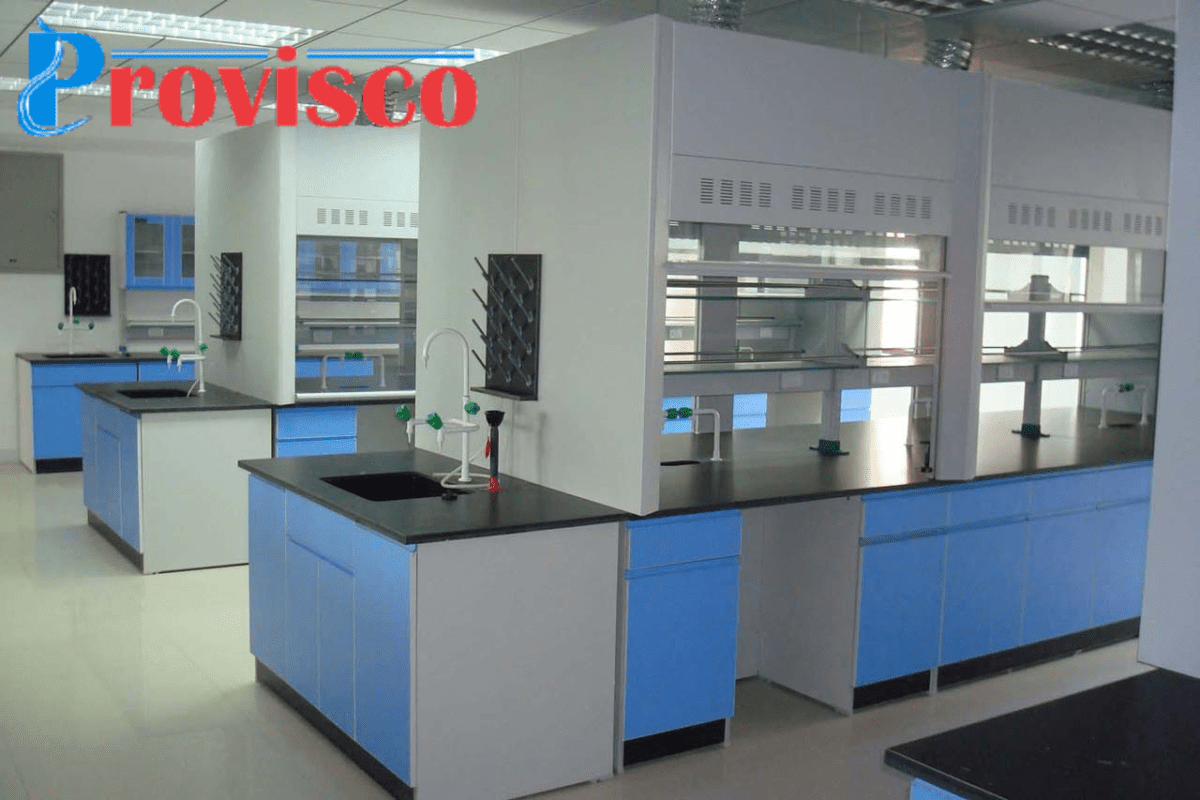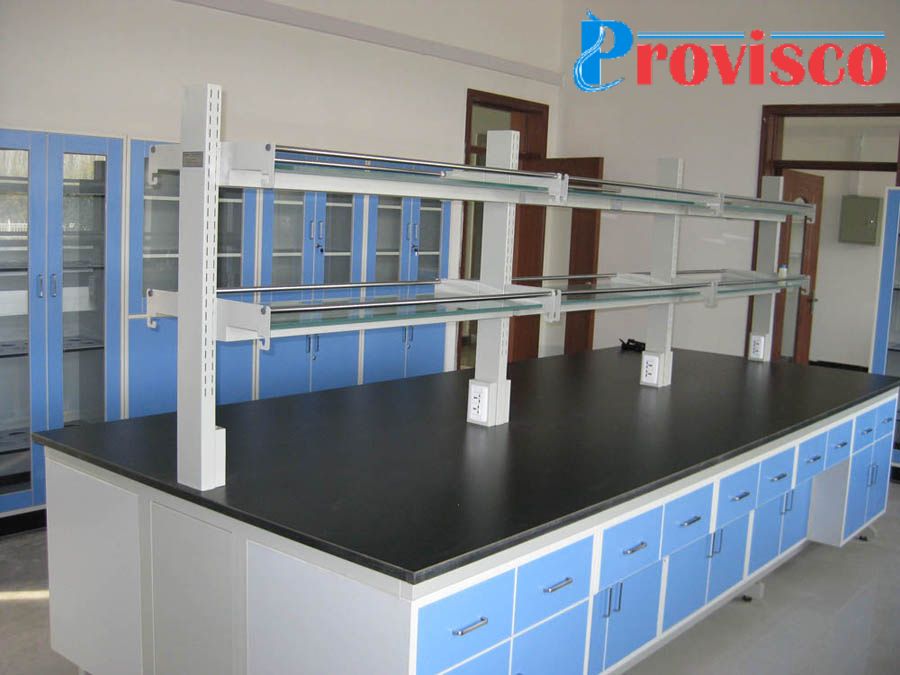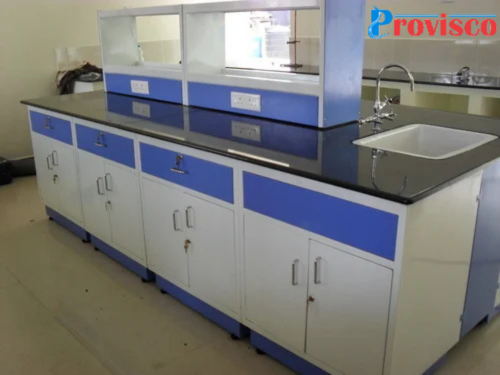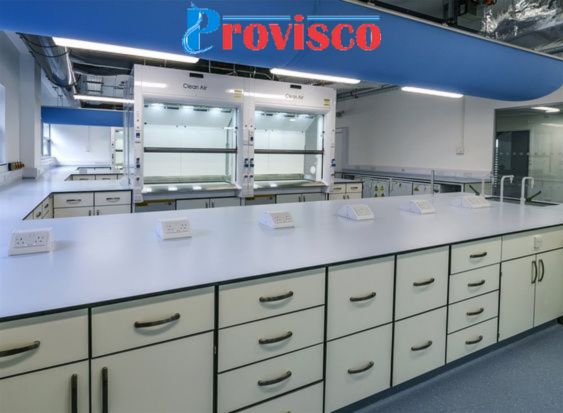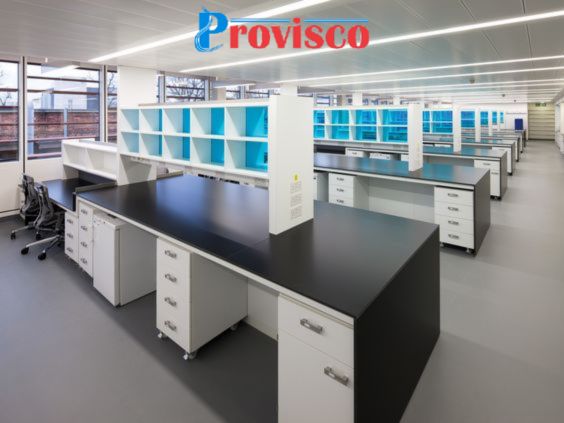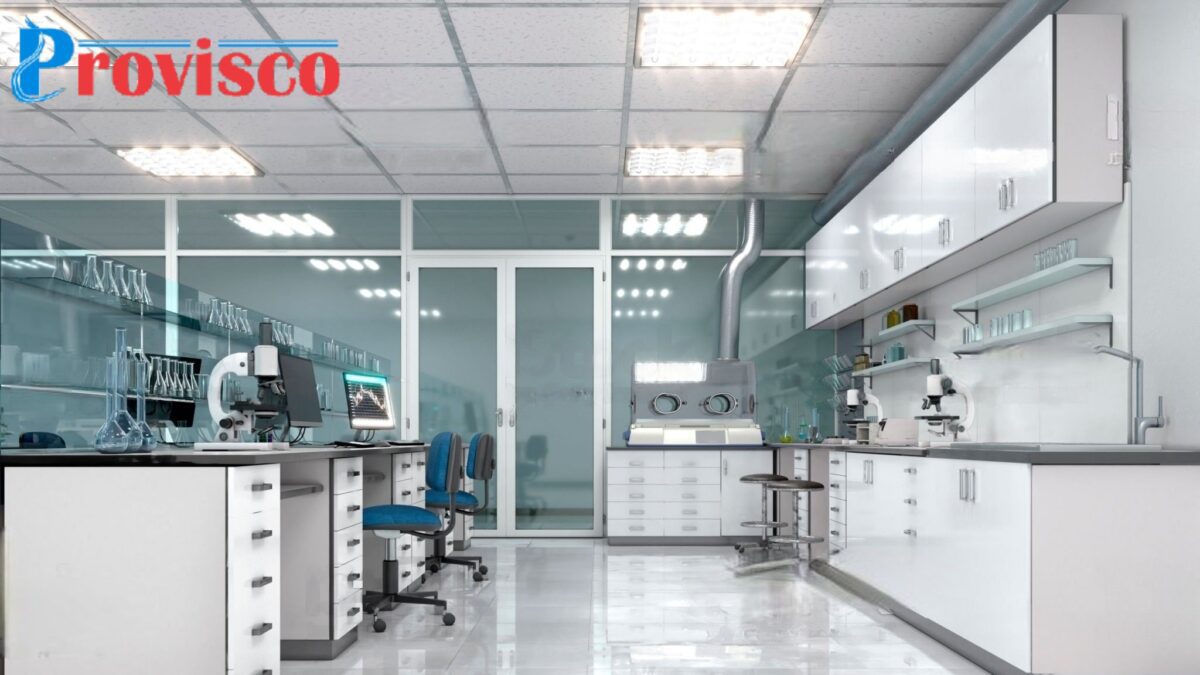The success of pharmaceutical research and development is heavily reliant on laboratory furniture. From assuring researcher safety to increasing workflow efficiency, innovative infrastructure is critical for providing a productive and favorable atmosphere for scientific discovery.
Introduction to Pharmaceutical Laboratory Furniture
Pharmaceutical lab furniture refers to a variety of specialized equipment and fixtures used to facilitate various operations and procedures in laboratory environments. Workbenches, storage solutions, fume hoods, and safety cabinets are among the many options.
The importance of Innovative Infrastructure
Innovative infrastructure in pharmaceutical laboratories is essential for a variety of reasons.
Improving Efficiency:
Efficiency is critical in pharmaceutical research since time is of the essence. Well-designed laboratory furniture can help to expedite workflows, reduce downtime, and increase productivity.
Visit Website: https://www.proviscotech.com/pharmaceutical-lab-s-s-furniture/
Maintain Safety and Compliance:
Pharmaceutical laboratories must follow severe safety and regulatory guidelines. High-quality furniture, complete with safety features such as fume extraction systems and chemical-resistant materials, is required to provide a safe working environment and comply with industry norms.
Key Elements of Pharmaceutical Lab Furniture
Workbench and Table:
Workbenches are the principal workplace for researchers, offering a stable platform for conducting experiments and manipulating equipment. Adjustable height features and ergonomic designs improve user comfort and productivity.
Storage Solutions:
Proper storage is required to organize laboratory supplies and chemicals. Cabinets, shelving units, and customized storage solutions all help to maximize space while also ensuring material safety and efficiency.
Fume hoods and secure cabinets:
Fume hoods and safety cabinets are essential for holding dangerous material and shielding researchers from toxic vapors and chemicals. To keep the environment under control, these specialty fixtures include ventilation systems and safety features.
Materials and Architecture
Reliability and Hygiene:
Pharmaceutical lab furniture must be made of robust materials that can survive heavy use and frequent cleaning. Stainless steel, epoxy resin, and other non-porous materials are frequently utilized to ensure sterility and avoid contamination.
Custom Choices:
Many manufacturers provide specialized lab furniture solutions to satisfy the unique needs and specifications of pharmaceutical laboratories. Customization choices range from modular designs to bespoke setups, providing additional flexibility and adaptability.
Ergonomics and User Safety
Importance in the Research Environment:
Ergonomic design principles are critical for increasing user comfort and reducing job injuries in pharmaceutical laboratories. Adjustable elements, such as height-adjustable work surfaces and ergonomic chairs, serve to alleviate strain and tiredness during long periods of work.
Design considerations for comfort:
When creating ergonomic lab furniture, it is important to consider task-specific requirements, anthropometric concerns, and user preferences. A comfortable, ergonomic workstation boosts productivity and employee happiness.
Innovative Features and Technologies
Automation and Integration:
Automation technology advancements are revolutionizing pharmaceutical laboratories, increasing productivity and accuracy in a variety of operations. Automated lab furniture, such as robotic workstations and sample handling devices, makes repetitive activities easier and reduces human error.
Digital control and monitoring systems:
Digital monitoring and control systems allow for real-time monitoring of laboratory variables such as temperature, humidity, and air quality. These technologies give researchers with useful data insights and enable remote monitoring and control of lab equipment.
Case Studies for Successful Deployment
Case studies show real-world instances of innovative lab furniture solutions that have been effectively applied in pharmaceutical laboratories. These examples demonstrate the real benefits of investing in high-quality infrastructure while also highlighting excellent design and execution techniques.
Future Trends for Pharmaceutical Lab Furniture
Pharmaceutical lab furniture will continue to evolve in terms of style, materials, and utility. Future-proof solutions, ranging from modular and adjustable furniture systems to integrated IoT technology, are tailored to the changing needs of pharmaceutical research.
Responsible Initiatives:
As sustainability becomes more essential in the pharmaceutical business, there is a greater emphasis on environmentally friendly lab furniture options. Manufacturers are using recycled materials, energy-efficient features, and sustainable production processes to reduce their environmental impact.
Conclusion
Pharmaceutical lab furniture serves as the foundation for research and innovation in the pharmaceutical business. By investing in new infrastructure, laboratories may increase efficiency, maintain safety and compliance, and foster scientific discovery.
FAQs
1. How does ergonomic lab furniture boost efficiency in pharmaceutical laboratories?
Ergonomic lab furniture increases user comfort while reducing the risk of workplace injuries, allowing researchers to work more efficiently and productively.
2. What are some examples of innovative technologies used in pharmaceutical lab furniture?
Examples include automated workstations, digital monitoring systems, and IoT-enabled equipment that improves efficiency, accuracy, and data insights.
3. Why is sustainability crucial for pharmaceutical lab furniture?
Environmental laboratory furniture decreases environmental effects and waste and contributes to a more eco-friendly workplace.

